April in Paris
April in Paris (m. Vernon Duke, w. E. Y. Harburg) was composed in 1932 for the Broadway musical, Walk A Little Faster where it was introduced by Evelyn Hoey. Freddy Martin had the first hit with the song in 1933. After listing some of the many artists who have recorded the song, Wikipedia says:
[Count] Basie’s 1955 recording is the most famous, and that particular performance was inducted into the Grammy Hall of Fame. On this recording, trumpeter Thad Jones played his famous “Pop Goes the Weasel” solo, and Basie directs the band to play the end “one more time,” then “one more once.”
From the Wikipedia profile:
 Frederick Alfred (Freddy) Martin (December 9, 1906 – September 30, 1983) was an American bandleader and tenor saxophonist. Freddy Martin was born in Cleveland, Ohio.[1] Raised largely in an orphanage and with various relatives, Martin started out playing drums, then switched to C-melody saxophone and later tenor saxophone, the latter the one he would be identified with. Early on, he had intended to become a journalist. He had hoped that he would earn enough money from his musical work to enter Ohio State, but instead, he wound up becoming an accomplished musician. Martin led his own band while he was in high school, then played in various local bands. After working on a ship’s band, Martin joined the Mason-Dixon band, then joined Arnold Johnson and Jack Albin. It was with Albin’s “Hotel Pennsylvania Music” that he made his first recordings, for Columbia’s Harmony, Velvet Tone, and Clarion 50 cent labels in 1930.
Frederick Alfred (Freddy) Martin (December 9, 1906 – September 30, 1983) was an American bandleader and tenor saxophonist. Freddy Martin was born in Cleveland, Ohio.[1] Raised largely in an orphanage and with various relatives, Martin started out playing drums, then switched to C-melody saxophone and later tenor saxophone, the latter the one he would be identified with. Early on, he had intended to become a journalist. He had hoped that he would earn enough money from his musical work to enter Ohio State, but instead, he wound up becoming an accomplished musician. Martin led his own band while he was in high school, then played in various local bands. After working on a ship’s band, Martin joined the Mason-Dixon band, then joined Arnold Johnson and Jack Albin. It was with Albin’s “Hotel Pennsylvania Music” that he made his first recordings, for Columbia’s Harmony, Velvet Tone, and Clarion 50 cent labels in 1930.
After a couple of years, his skill began attracting other musicians. One such musician was Guy Lombardo, who would remain friends with Martin throughout his life. After graduation from high school, Martin accepted a job at the H.N. White musical instrument company. When Lombardo was playing in Cleveland, Martin tried giving Lombardo some saxophones, which proved unsuccessful. Fortunately, Lombardo did get to hear Freddy’s band. One night, when Guy could not do a certain date, he suggested that Freddy’s band could fill in for him. The band did very well and that’s how Martin’s career really got started. But the band broke up and he did not form a permanent band until 1931 at the Bossert Hotel in Brooklyn. [read more]
___________________
Freddy Martin and his Orchestra, vocal: Lois Elliman — recorded in October 1933, according to the video provider; issued on the 78 rpm single Liberty Music Shop L 155, b/w “Tu sais-tango”
.
Freddy Martin and his Orchestra, vocal: Elmer Feldkamp — recorded on 1 December 1933; issued on the 78 rpm single Brunswick 6717, c/w “Count Your Blessings”
.
BBC Dance Orchestra directed by Henry Hall — issued in 1934 on (UK) Columbia CB 705, b/w “Play to Me Gipsy (the Song I Love)” (m. Karel Vacek, w. Jimmy Kennedy); the B-side is an adaptation of the Karel Vacek song “Cikánka” (1931?)
.
Thelonius Monk Trio – recorded at WOR Studios, NYC, 24 October 1947
Thelonious Monk (piano)
Gene Ramey (bass)
Art Blakey (drums)
Coleman Hawkins and his All Stars — recorded on 11 December 1947; issued on RCA Victor 20 3057, c/w “How Strange”
.
Bud Powell Trio — recorded in NYC February 1950 — Bud Powell (p) Curly Russell (b) Max Roach (d)
.
Charlie Parker – This is an undated live version. A studio recording of the song was track 3 of the album Bird With Strings.
There is an album titled Bird with Strings: Live at the Apollo, Carnegie Hall & Birdland (1978) culled from live recordings of Parker performing with strings during the years 1950-52. But this song is not on that album. However a live recording of April in Paris from Carnegie Hall does appear as a bonus track (#16) on the compilation album Charlie Parker with Strings: the Master Takes, released in 1995. This might be that track, as Wikipedia has the duration as only five seconds longer than this.
.
Sarah Vaughn – recorded in December 1954; issued on the album Sarah Vaughan, EmArcy MG-36004
Sarah Vaughan (vo)
Clifford Brown (tp)
Herbie Mann (fl)
Paul Quinichette (ts)
Jimmy Jones (p)
Joe Benjamin (b)
Roy Haynes (ds)
.
Erroll Garner Trio – from the album Concert by the Sea, recorded 19 September 1955 in Carmel, California in a converted church.
Eroll Garner: Piano
Eddie Calhoun: Bass
Denzil Best: Drums
.
Count Basie and his Orchestra — 1955
Jazzstandards.com says,
It was Count Basie’s classic 1955 recording of “April in Paris,” arranged by organist “Wild” Bill Davis, that brought the song to the forefront for jazz musicians. It was the Basie Band’s biggest hit, climbing to number 28 on the charts. The swinging performance, which featured an abundance of sterling solos, was later inducted into the Grammy Hall of Fame, and future performers have continued to reference the “one more time” tag ending.
.
Coleman Hawkins – from the album Hawk in Paris, released 1956
.
Duke Ellington and his Orchestra with Wild Bill Davis, Berlin – 1969
The video provider attaches the following info:
Live in Berlin in 1969. Wild Bill Davis “is the man who fashioned the orchestration for the Count Basie recording of April in Paris”, says Duke Ellington. The organist plays the arrangement of the Count Basie recording in 1955. He was scheduled to record his arrangement of “April in Paris” with the Count Basie Orchestra in 1955, but was unable to make it to the recording sessions. Recorded without his participation, the tune went on to be a Top 30 pop hit.














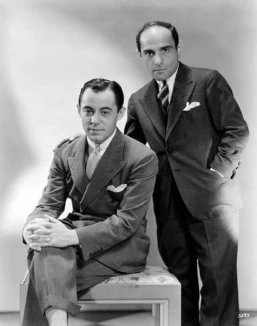

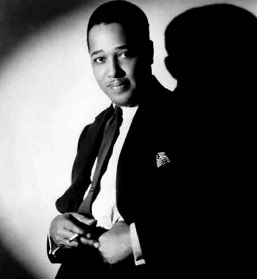


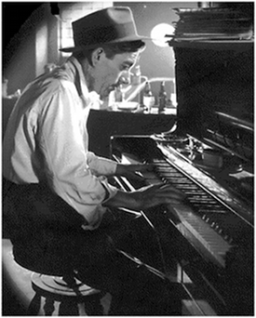
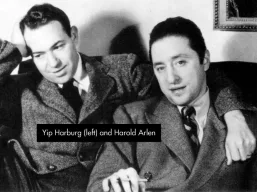




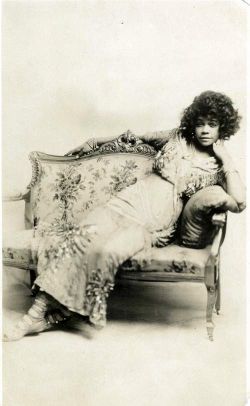










Feb 20, 2011 @ 15:50:22
What about recordings of this song by Billy Eckstine in 1952, Rosemary Clooney in 1960, Andy Williams in 1961 and one by Keely Smith?
LikeLike
Feb 20, 2011 @ 16:00:31
Hi Rob, Thanks. I’ll have a listen to those. It’s likely that I looked for the ones you’ve mentioned and failed to find them, but this feature was published a year ago at a time when I used fewer recording history resources. I don’t attempt to include all covers, though in odd cases where few are found in video libraries I might post every recording I could find at the time. While I try to include some of the most popular or well-known versions, I may omit a recording by a “big name” because of a poor quality video (audio or video defects), or if the recording is not to my taste. — Jim
LikeLike
Feb 25, 2011 @ 06:49:21
Thanks, Jim. I don’t know why but I have developed an interest in the history of recordings of popular music. My mp3 track collection exceeds 12,600 at this time and runs from a recording from 1927 (Rudy Vallee) to 2010, with many from the 1940’s and 1950’s. I started collecting “golden oldies” from my teenage years (1956-1963) and it grew from there, largely because I became a big fan of ol’ blue eyes. This is also my first entry into the world of blogs. I’m not at all sure how one does this. I’m hoping it will enable exchanges with others with a similar interest.
LikeLike
Feb 25, 2011 @ 17:36:50
Hi toccataprima,
Revised response: 5:35 PM PST, 25 Feb
Your library sounds impressive. I know that recordings used for videos tend to be of poorer quality than you can find in audio files. Using videos was originally done because I knew of no good audio libraries. Then I stuck with it because I appreciate the enhancement of audio files with film clips, photo montages, or slide shows in the hands of talented video creators. I still don’t use audio file sites much, though I’ve listed a few in my sidebar.
Until two and a half years ago, I had never blogged and hadn’t even thought about it. Actually, I don’t think of most of my sites as blogs. I create websites using the WordPress.com blogging platform because it is relatively easy to use, and free.
The steps I use on this and other similar sites are fairly simple:
1. Choose a year
2. Select ten or so standards and hits published in that year
3. For each standard or hit selected, choose ten to fifteen (occasionally fewer or more) recordings, including as many of the earliest ones you can find, hit versions, and other well-known or particularly striking versions over the ensuing decades.
4. Other details include finding the correct recording date, personnel playing on a track, and other pertinent facts. This can take quite a bit of time to locate and gather. Jazzdisco.org and other discographies are very useful for this task.
5. Search for photographs of a. original sheet music, b. film posters and/or publicity stills, c. album covers and shots of the performers at about the time of the recording. Select the best of these, edit them if necessary, and embed them within the text or between video and descriptive text.
6. Sometimes I include little about the song’s history. In other cases, particularly for top-ranked standards I will assemble a lengthy profile using two or three sources. A brief songwriter bio may be included, or in some cases, links to bios.
7. A performer profile, or anecdote may be included with a recording.
That’s a quick outline of what I do. Looking for and selecting images and videos usually takes up a lot of the time I spend on a feature. Editing images can be time-consuming too. Correctly dating songs and recordings is very important to me, and attending to details such as this can take a lot of time and effort as well.
Jim
LikeLike
May 15, 2012 @ 09:24:35
Toccataprima,
Have you been to Second Hand Songs yet? They typically include a lot more covers than I do, and they allow contributors. In fact, they are currently looking for new contributors. — doc
LikeLike
Mar 19, 2011 @ 21:08:43
Jim, my wife gave me an iPad for my birthday last summer and when I play a song, it shows the album cover and lyrics if I have them. As much of my collection dates back to the days of the original Napster, I have about 8000 songs that initially had no album artwork. I have added missing artwork to 99.9% of them – and then I discovered this website . . . my artwork is now becoming very entertaining as much of what I had before is being replaced by the fruits of your labor. Thanks so much !!!
LikeLike
Mar 19, 2011 @ 21:45:41
Hi, Jonathan. Glad to help! – Jim
LikeLike